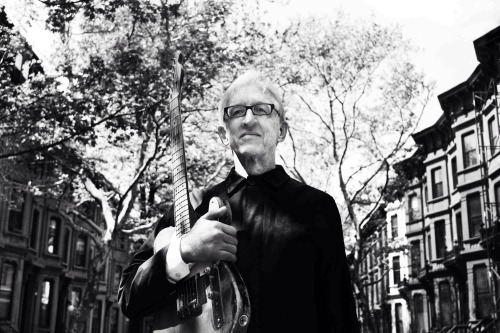
Onetime Commander Cody and His Lost Planet Airmen guitarist Bill Kirchin plays “The Times They Are A-Changin’.”
“The Times They Are A-Changing ‘”:
Plus “Highway 61 Revisited”:
— A Days Of The Crazy-Wild blog post —

Onetime Commander Cody and His Lost Planet Airmen guitarist Bill Kirchin plays “The Times They Are A-Changin’.”
“The Times They Are A-Changing ‘”:
Plus “Highway 61 Revisited”:
— A Days Of The Crazy-Wild blog post —

Editor’s note: I believe I first came across the excellent writing of Roy Trakin in New York Rocker during the heyday of punk, towards the end of the ’70s. A few years later he did some writing for a magazine I edited at the time, Boulevards, and much later, decades later, he contributed to my online magazine, Addicted To Noise.
Roy has been writing about pop culture since the early ’70s. He was most recently a staff writer/columnist at Billboard. His writing has appeared in numerous publications including New York Rocker, Creem, Musician, the L.A. Times, the L.A. Herald Examiner, Newsday, the N.Y. Daily News and USA Today.
Today he sent me his column, “Trakin Care Of Business,” and I was excited that he’d led with a review of my novel.
He also writes in this column about Spoon, Ty Segal and the film “Cavalry.”
TRAKIN CARE OF BUSINESS: SEARCHING FOR THE FOREVER INFINITE ECSTATIC
By Roy Trakin
1. Michael Goldberg, True Love Scars (Neumu Press): Just call it a portrait of the rock critic as a young freakster bro, coming of age in the glorious peace-and-love innocence of the ‘60s dream, only to crash precipitously, post-Altamont into the drug-ridden paranoia of the ‘70s, characterized by the doom and gloom of the Stones’ sinister “Sister Morphine” and the apocalyptic caw-caw-caw of a pair of ubiquitous crows. The one-time Rolling Stone journalist turned-Internet pioneer with his groundbreaking mid-‘90s Addicted to Noise site has always been on the cutting edge and here he perfectly captures a horny, but romantic, teenager growing up in Marin County back in what he calls the Days of the Crazy-Wild, where getting your parents to let you grow your hair long was proof alone of your manhood. Michael (Don’t call him Mike) Stein grows up enraptured with Dylan and Fitzgerald, the Beatles and Kerouac, so it’s no surprise his friends call him “Writerman,” in search of “un moment decisif,” the “ghost of ‘lectricity” or just plain getting laid by his mythic “Visions of Johanna” chick, with whom he hopes to experience the “Forever Infinite Ecstatic.” Yes, this is Goldberg’s version of Almost Famous, except he’s a little less callow than Cameron Crowe and a little more on the prowl, and you feel for his fumbling first attempts at romance and the ultimate betrayal which follows. This is the first part of his Freak Scene Dream trilogy, and the veteran rock scribe has adapted a quick-paced, be-bop, repetitive style of relating his tale that takes a bit of getting used to, but eventually kicks into a seductive rhythm very much his own. If you lived through those momentous times, or even if you didn’t, Goldberg conveys that rush of ideas, music and literature that made it such a heady era, while still ruefully acknowledging its fleeting, self-destructive aftermath.
2. Ty Segall at the Echo, Los Angeles: Is he the Great White Hope of psychedelic, garage, grunge-punk or merely the Great White Hype of aging boomer rock critic types trying to hold on to their glory? It’s funny when you start to get noticed, especially for this young veteran from Laguna Beach who looks more like a surfing Dennis the Menace with requisite gleam in his eye than a no wave/metal/avant rocker intent to wrench the pop culture buzz back from DJ and place it back squarely (and loudly) on the guitar hero. After all, he’s been putting out critically acclaimed albums on his own for about seven years now, not to mention spawning a whole sub-group of bands he’s championed (including one of the evening’s opening acts, the powerful, compact Zig Zags, who he’s produced, and offer a fine combo platter of Motorhead, the Ramones, Black Sabbath and the Stooges). What passes for the mainstream rock media have been championing this as Segal’s time, mainly on the strength of his 17-song, double-album on renowned indie Drag City, Manipulator, which combines all his many previously demonstrates strengths – a distinctive lo-fi guitar fuzz rumble, thrashing wall of sound backdrop and penchant for melodies – into actual songs. So, this four-night sold-out engagement at the tiny, packed to the gills and where’s the fire marshal Echo, served as his coming out party for a rabid, moshing young following that proves rock and roll may be a loser’s game, but it still mesmerizes and don’t ask me to explain because I’ve been trying to for four decades now, and still can feel the buzz from greatness. Not that this was in that category, but the potential is certainly there, though world domination might have to give way to cult appeal, given the fragmented state of what we still call the music business in some quarters. You certainly won’t hear me complaining about the “Good Vibrations” opening for “Manipulator,” the first song of the evening, nor the “Sweet Jane” nod and keening falsetto of “Tall Man, Skinny Lady,” with its nods to Iggy, Ziggy and Hendrix. There’s a loping bluesy rockabilly feel to “The Singer” and a “Raw Power” urgency to “The Clock,” while “Don’t You Want to Know?” sounds like a girl-group song as performed by The Ramones (Joey always was a big Ronnie Spector fan). The Stones’ “Honky Tonk Woman” is evoked by “Susie Thumb,” while Segall introduces “The Crawler” as “a song about friendship.” The closing “Slaughterhouse” is a bludgeoning heavy metal extravaganza, as a girl from the audience jumps on-stage and is handed the mic by Ty, and goes into some Yoko-styled caterwauling before she stage-dives back into the crowd. The encore consists of Replacement-like covers of “Sweet Home Alabama,” with some random dude called up to supply the vocals, followed by “Paranoid,” two choices which I felt fit their aesthetic perfectly, but my erudite pal Gary Stewart found too self-consciously ironic to support what he’d heard before. No, rock and roll stars will no longer conquer the world, but for this one night, Ty Segall might’ve been declared the Mayor of Echo Park.
3. Spoon, They Want My Soul (Loma Vista/Concord): Britt Daniel and company’s eighth studio album, and first for Tom Whalley’s imprint at Concord Music Group, finds the band confident in its quirkiness, wearing its stylistic conceits on its collective sleeve. The veteran group has been around long enough now to feel confident in their quirkiness and it shows on this return to semi-major label status, as Spoon isn’t afraid to let their freak flag fly, so to speak, while still offering tuneful appeal. “The Rent I Pay” starts off like “Street Fighting Man,” all menace and Jim Eno’s thumping drums leading into Daniel’s drawling vocals, with jokey lines like “And I lost all my tapes of back masking” in a song about the toll of living. “If that’s your answer/No, I ain’t your dancer” is a rallying cry for the modern age. “Inside Out” is a headphone track of the first order, a Squeeze-style “Black Coffee In Bed” faux R&B number with glistening, cascading synth harps and Lennon-esque lyrics about love, gravity and religion. “I don’t got time for holy rollers/Though they may wash my feet/And I won’t be their soldier.” There’s a Motown beat, nourish twang and discordant piano in “Rainy Taxi,” and end-of-world lyrics like “And you’ve been sleeping through the brightest flash of apocalyptic ruin.” The catchy first single, “Do You” opens with some Fifth Dimension doo-doo-doos, leading into a raspy, ‘80s Psychedelic Furs new wave vibe, before closing with some clanging guitars and what sound like flutes, all insisting “That’s the way love comes,” just when you’ve given up hope of ever finding it. The Bowiesque “Knock Knock Knock” thumps along at its own casual pace with a whistled backdrop, faint ghostly cries and pneumatic guitars, comparing life to a movie and finding it comes up wanting. The Radiohead shimmer, pumping organ and Flamenco acoustic guitar of “Outlier” finds Daniel once again playing the role of film critic: “And I remember when you walked out of Garden State/Cause you had taste, you had taste/You had no time to waste.” He returns to the theme of those who’d usurp his soul in the title track, including card sharks, street preachers, up-sellers, palm-readers, post-sermon socialites, park enchanters, skin tights, enchanted folk singers, Jonathon Fisk (apparently a bullying middle school classmate of his), “and on and on and on.” The Beatles-ish “I Just Don’t Understand” could have come right off Rubber Soul, once again pointing out the Daniel-Lennon comparisons, while “Let Me Be Mine” has a shaggy dog, sawing feel to its acoustic strum and drang that is underlined by some Chuck Berry riffs in a song once more about being run out on: “You’re gonna take another chunk of me with you when you go.” The closing number, “New York Kiss,” sports some “Under My Thumb” vibes and a Dolls-y swagger to its tale of fading memories about time and place, which represents a pretty good description of Spoon’s ever-expansive stylistic palette as any.
4. Calvary (The Weinstein Company): Written and directed by Irishman John Michael McDonagh (brother of In Bruges’ Martin McDonagh), this metaphysical black comedy shares his sibling’s love of a good polemical argument, as Brendan Gleeson stars in an Oscar-worthy turn as a troubled priest who tries to keep the faith in a small town nestled in God’s country on the Emerald Isle against a stunning backdrop of the ocean pounding the rocks. Those scenes of natural beauty are juxtaposed against the dark, hidden secrets of the small village itself, filled as it is with abusive husbands, philandering wives, bitter virgins, spoiled rich guys, atheist doctors, feckless priests, dying writers, bankrupt pub owners, serial killers and even a suicidal daughter thrown into the mix. Gleeson’s Father James is the object of an anonymous confessor who, at the very beginning of the movie announces his intention to kill an innocent member of the Catholic church to make up for the abuse he suffered at the hand of a priest. “I first tasted semen when I was seven years old,” he says, with Gleeson answering, “That certainly is a startling opening line.” The movie proceeds like that, with many debates ensuing both for and against the presence of a higher being. The cast is outstanding, particularly Chris O’Dowd as the cuckolded butcher, a grizzled M. Emmet Walsh as a feisty aging author, Game of Thrones’ Aidan Gillen as a heartless surgeon, Flight’s Kelly Reilly as Gleeson’s reconciled daughter and his real-life son, Domhnall Gleeson, as a convicted murderer. There’s a relentlessness to the narrative that seems preordained, but that is fitting with the movie’s theme about martyrdom and accepting the inevitability of fate. The soundtrack (available on Varese Sarabande), with an original score by Patrick Cassidy, as well as some great Irish songs, moves the film along with a deceptively Gaelic lilt, finding the salvation in the dark void at its center.
5. The Punk Singer (Opening Band Films/Netflix): Produced by Tamra Davis and directed by poet/performance artist Sini Anderson, with help from Kickstarter, this documentary tells the story of Riot Grrrl provocateur and Bikini Kill lead singer Kathleen Hanna. Hanna, who went on to form electronic rock act Le Tigre and her most recent project, The Julie Ruin, is a fascinating subject, from her earliest days as a punk rabble-rouser to her recent incarnation as a revered artist and feminist pioneer. Along the way, the movie veers into a love story, with her marriage to the Beastie Boys’ Adam Horovitz (band mate Mike D’s wife, veteran film director Tamra Davis, produced, making it a family affair), and a Lifetime-style triumph over an eight-year battle with, of all things, Lyme disease, something she has in common with Daryl Hall, among others. Thrust into the feminist political atmosphere of Olympia, Washington, in the late ‘80s, the charismatic, idealistic Hanna was one of the earliest influences on a young Kurt Cobain, scribbling the phrase, “Kurt smells like teen spirit” on his wall, after the deodorant spray, spawning the mainstream breakthrough of punk that, ironically, led to his ultimate disenchantment. Her formation of Le Tigre in the early 2000s also anticipated the EDM movement, and her recent welcome comeback provides a feel-good ending to what is a fascinating story whose ramifications are still being felt today.
6. Derek (Channel 4/Netflix): Although he received an Emmy nomination for his performance in the title role, Ricky Gervais’ latest series hasn’t seemed to catch on with the tastemakers, largely because of what is perceived as its overly sentimental view of a mentally challenged, maybe autistic helper at an old people’s home in an English suburb. Not quite what you’d expect from the Gervais who has suffered a bit of backlash from his celebrity skewering as since-deposed Golden Globe host, but once you hook into its subtle rhythms, the show warms the heart as well as tickling the funny bone. The now-available second season of six episodes features the same characters, some lovable, others loathsome, but none unredeemable, in this sometimes biting, but often moving ensemble piece. While Gervais’ Derek, with his Ish Kabibble bangs, lopsided grin and constantly moving fingers, is the heart of the series, the emotional center is Kerry Godliman’s Hannah, who selflessly runs the place and considers it a privilege to be with people when they die, barely concealing the sadness and worry in her eyes. David Earl’s Kevin “Kev” Twine has a larger role this season as Derek’s best friend, a sex-obsessed drunk who surprises us as a gifted painter and sculptor. The conceit of a film crew at work, like in The Office, allows the characters to speak directly to the camera, exposing their innermost feelings, and offering the chance for those sideways glances that reveal the truth beneath the appearance. The Netflix subtitles are also most welcome, not just because of the English accents, but many of the best lines are mumbled throwaways that you can’t quite catch on first go-around. There may be something a little dishonest about Gervais’ Derek, for whom kindness is the key to a happy life, but he is so committed to the character, you must give in. And, any series capable of making you laugh and cry, sometimes at once, is good enough for me.
7. Houdini (History Channel): With director Uli Edel and a screenplay by Nicholas Meyer, The History Channel goes for broke on this two-part, three-and-a-half-hour mini-series about the famed magician, but the result is a typically overblown Classics Illustrated version of the story, enlivened somewhat by the great casting of Adrien Brody in the title role. One of the key elements in the movie is the use of CSI-style graphics to explain how some of the tricks were done, and the breathless narrative does touch on all the basics – the love of his mother, the spying during World War I, the great escapes and his latter attempts to disprove spiritual mediums. Most of the cast passes by in a blur, though soap opera veteran Kristen Connolly, late of House of Cards, does have her moments as Houdini’s much-beleaguered, pot-smoking wife, who is only worried that she may be a widow before her time. Despite its pulp elements, Houdini is never boring, thanks to an energetic performance by Brody, who evokes the great magician in all his Semitic glory. Houdini is not exactly magical, and more trick than treat, but – pun intended – escapist entertainment at heart.
8. NFL Opening Weekend: There’s something about the start of pro football that is like anticipating a new year of Game of Thrones. You know there will be plenty of mayhem, unexpected casualties and more than a little blood spilled along the way. With just 16 regular season games, every one seemingly counts for something, and the sheer limited amount lends itself to hopes and dreams for a momentum-fueled short-term run unlike the more extended baseball and basketball seasons, which groan along until the playoffs. For the 46th consecutive year, I hold up hopes for my woebegone New York Jets, waiting for the next Joe Namath no less hopefully than Beckett did for Godot, with just as much chance of that happening under QB Geno. Hey, at least it rhymes with Godot. The team is already going into the season crippled at the crucial cornerback position after skin-flinting GM John Idzik failed to welcome back estranged all-pro Darrell Revis, who proceeded to take his talents to – of course, the hated New England Pats, our chief rivals for AFC East domination. And it hurts to see yet another coach the NYJs let get away – Pete Carroll, start to build a dynasty with the Seattle Seahawks, much like another deserter, Bill Belichick, did with the Patriots. In fact, the Seahawks look like that rare beast in the NFL, a team capable of a repeat, which hasn’t been done since, right, the Patriots under Tom Brady and, yup, Belichick. There still doesn’t look like there’s a team that can challenge this hard-hitting bunch, who have already been compared to the ’85 Bears in terms of their defense, and their Russell Wilson offense, no with speedster Percy Harvin, ain’t too shabby, either. Still, the games must be played, and like Game of Thrones, you never know who might get beheaded along the way.
9. Lakeview Garden Restaurant: In search of some old-school Noo Yawk Cantonese Chinese? This step back into the past, say, Kwong Ming in Wantagh, for the traditional Sunday night meal for a middle-class suburban Lawn Guyland Jewish family within a won-ton toss of Levittown. Yes, this find, located in a cranny of a Westlake Village strip mall, is the real deal, a true OG Jew throwback to a previous time, when crispy noodles came with duck sauce and mustard, and you could choose from Group A or Group B from pepper steak, shrimp with lobster sauce or moo goo gai pan. With the closure of Uncle Chen’s on Ventura Blvd. in Encino, I was bemoaning the fact there were no traditional Chinese Cantonese restaurants to be found. Hell, you’d have a hard time finding a decent Chinese restaurant in this town period, what with the proliferation of Thai, Korean barbeque and sushi joints, but this place is a welcome remembrance of times past, down to the blue-haired 80-something ladies at the table across from us, immersed in their cell phones, naturally. And, best of all, it’s right next to the Regency Twin Theaters, a pair of old-school art-houses that show indie films and offer a tray of mints at the end of each screening. Make an evening of it. (4700 Lakeview Canyon Road, Westlake Village, CA)
10. Gripe of the Week: Who knew punk had such staying power? Imagine my surprise to hear the dulcet tones of Sid Vicious croaking, “My Way” in the new TV ad for the luxury Acura, the Mercedes clearly in its sight? Imagine the well-heeled young buyer attracted to buy the car on the urging of one John Simon Richie? Malcolm McLaren is doing the pogo in his grave as we speak. And that was only topped by the NFL going to Nirvana’s “Come As You Are” over a commercial break from opening night in Seattle. Or Martin Scorsese signing up to do a Ramones documentary. Not to mention Ty Segall’s current heat. Guess my phrase, “The Persistence of Punk” is true… Hard to believe the force of life that is Joan Rivers won’t be around any longer. The woman was fearless; nothing stood in the way of a good joke, and she is the role model for today’s crop of young female comics, whether they want to admit it or not. She sounded so alive a few weeks ago on Howard Stern, joking about dying. If this was elective surgery, it just goes to show, going under the knife is never a slam dunk, especially when you’re 81 and work as tirelessly as Joan did right up until the end… It’s not a dog-eat-dog world. It’s a dog-doesn’t-answer-the-other-dog’s-email universe… It’s been a rough couple of weeks for music journalist types. First, the death of Chuck Young, then the shocking layoff of Edna Gunderson after three decades at USA Today, via a phone call, no less. The secret is to work for yourself. Unfortunately, I learned that lesson a little late in life, but it’s better late than never. The days of corporations offering you a cradle-to-crave employment are long gone, and the sooner we realize it the better… Like Al Hirschfeld working the name of his daughter Nina, into his N.Y. Times caricatures, I have promised my wife Jill to mention her in every column…
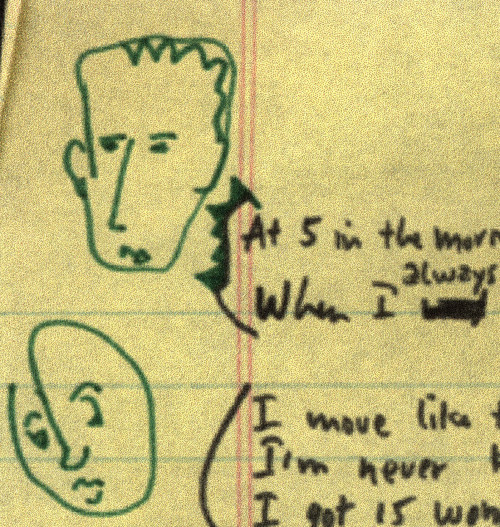
Elvis Costello made only the most minor changes to Bob Dylan’s 1967 lyrics for the song “Married To My Hack” that is included on the not-yet-released album, Lost On The River: The New Basement Tapes — with one exception.
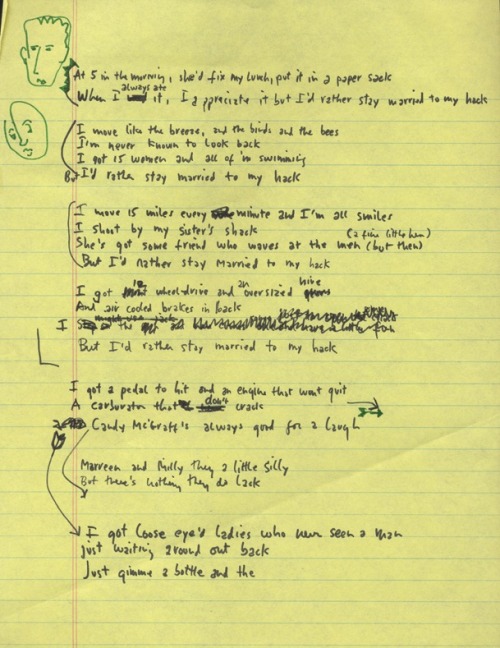
On the copy I got of a piece of yellow, blue-lined paper on which Dylan wrote the lyrics, the final line of the song is incomplete.
Dylan wrote, “Just gimmie a bottle and the”
That’s it.
He never finished it.
But Costello sings, “Gimmie a bottle and someone to throttle ’cause I’d rather be married to my hack.”
It’s certainly a controversial line in an otherwise humorous song in which Dylan details all the many women who apparently want him.
He wrote that he’s “got 15 women,” and later on the page, that he’s “got loose eye’d ladies who never seen a man just waiting around out back.”
The punchline is, of course, the song’s title. Dylan repeatedly tells us throughout the song that he would “rather be married to my hack.”
But the song’s best lines comes early on.
“I move like the breeze, and the birds and the bees
I’m never known to look back…”
[I just published my rock ‘n’ roll novel, True Love Scars.” There’s info about it here.]
— A Days Of The Crazy-Wild blog post —
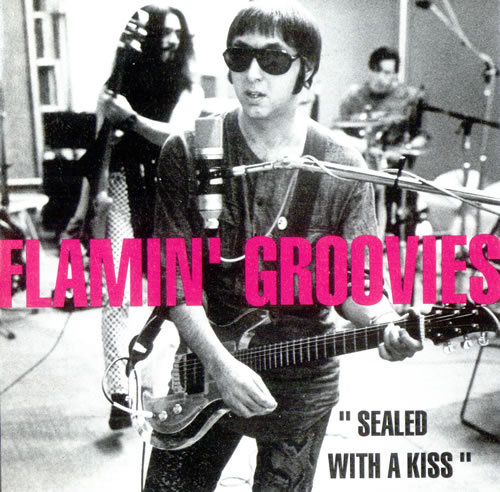
Ten songs that shook the world!
By Michael Goldberg
I’ve learned quite a few things from the critic and cultural historian Greil Marcus over the years, but maybe the first – and the one I keep coming back to — is that when listening to music, the artist’s intention isn’t so important. What really matters is what you and I, as listeners, hear.
You know, what we get from the music.
“I was never interested in figuring out what the songs meant,” Marcus wrote in the prologue to his book, “Bob Dylan, Writings 1968 – 2010.” “I was interested in figuring out my response to them, and other people’s responses. I wanted to get closer to the music than I could by listening to it – I wanted to get inside of it, behind it, and writing about it, through it, inside of it, behind it was my way of doing that.”
Marcus has been sharing his response to the music since the late ‘60s. In “Mystery Train” and “Lipstick Traces,” “The Old, Weird America: The World Of Bob Dylan’s Basement Tapes” and other books he uses art as a doorway, and steps through it to find vast secret histories, histories of America and Europe that mostly hadn’t made it into the history books – at least not in the way Marcus writes.
After reading “Lipstick Traces,” which starts with Johnny Rotten and then proceeds to spin into a history of anarchistic rebellion going back long before Johnny Rotten was born – I haven’t been able to listen to a Sex Pistols or Public Image Ltd. song without thinking of Dada and the Situationists and the May ’68 protests in France and so many other things that Marcus wrote about in that book.
This new one, “The History of Rock ‘n’ Roll in Ten Songs” (Yale University Press, 320 pages), is all about what Marcus hears when he listens to ten songs, and what he hears is unexpected and sometimes revelatory. It’s not any kind of history of rock that you or I have ever read before, because Marcus sees no point in revisiting the same old story that we’ve read numerous versions of since the ‘60s.
“Shake Some Action” is one of ten songs Marcus writes about in the book.
One of the big ideas in the book is that the chronological history of rock ‘n’ roll – that blues and country begat Chuck Berry and Elvis begat Dylan and the Beatles and so on and so on, is, if not irrelevant, beside the point. Or if not beside the point, well, we’ve been there. We all know, or think we know, the contours of that story. Marcus has a different story to tell.
“Whole intellectual industries are devoted to proving that there is nothing new under the sun, that everything comes from something else – and to such a degree that one can never tell when one thing turns into something else,” Marcus writes in the introduction to his book. “But it is the moment when something appears as if out of nowhere, when a work of art carries within itself the thrill of invention, or discovery, that is worth listening for. It’s that moment when a song or a performance is its own manifesto, issuing its own demands on life in its own, new language – which though the charge of novelty is its essence, is immediately grasped by any number of people who will swear they never heard anything like it before – that speaks. In rock ‘n’ roll, this is a moment that, in historical time, is repeated again and again, until, as culture, it defines the art itself.”
He continues:
“’It’s like saying, “Get all the pop music, put it into a cartridge, put the cap on it and fire the gun,’ Pete Townshend of the Who said in 1968. ‘Whether those ten or 15 numbers sound roughly the same. You don’t care what period they were written in, what they’re all about. It’s the bloody explosion that they create when you let the gun off. It’s the event. That’s what rock and roll is.’ Any pop record made at any time can contain Pete Townshend’s argument. … which is to say that this book could have comprised solely records issued by the Sun label in Memphis in the 1950s, only records made by female punk bands in the 1990s, or nothing but soul records made in Detroit, Memphis, New York City, San Antonio, New Orleans, Los Angeles and Chicago in 1963.”
And more:
“From that perspective, there is no reason to be responsible to chronology, to account for all the innovation, to follow the supposed progression of the form. The Maytals’ ‘Funky Kingston’ is not a step forward from the Drifters’ ‘Money Honey,’ or Outkast’s ‘Hey Ya’ a step forward from ‘Funky Kingston.’ They are rediscoveries of a certain spirit, a leap into style, a step out of time. One can dive into a vault as filled with songs as Uncle Scrooge’s was filled with money and come out with a few prizes that at once raise the question of what rock ‘n’ roll is and answer it.”
I’ve been reading reviews and books by Marcus since the late ‘60s, and he’s dead serious about what he puts on the page. And about what he discovers when he listens to and then writes about rock ‘n’ roll. This is serious stuff, life or death, and if you think music is nothing more than entertainment, well this book is probably not for you.
Reading Marcus is hard work because you have to think when you read his sentences. He takes for granted that you know a hell of a lot about music and art and film and literature. He’s not into coddling the reader. So when he calls his book “The History Of Rock ‘N’ Roll In Ten Songs,” it’s not that you’re going to get the literal history of the music, what you’re going to get is a theory about rock ‘n’ roll, and then ten examples that, in different ways, back up that theory.
So Marcus takes his ten songs and writes an essay about each. He works hard to tell us why these songs matter so much to him, why each in its own way contains the history of rock ‘n’ roll, and why they should matter to us too. And after you read this book, they likely will.
Read the rest of this column at Addicted To Noise, and dig many other great music features, news and reviews.
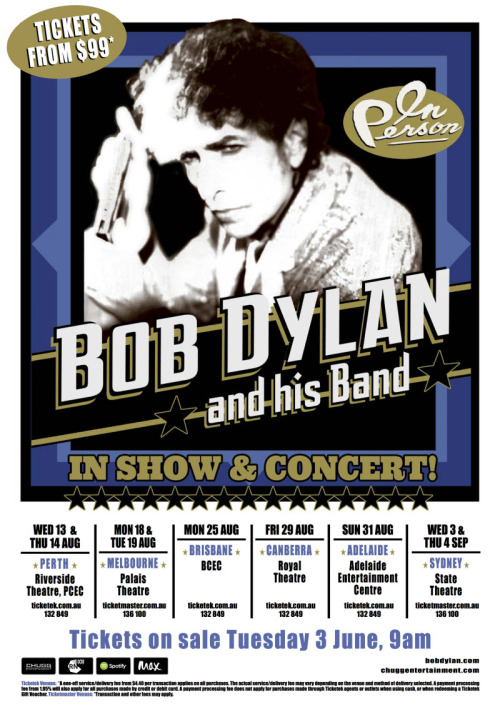
Last night, August 31, 2014, Bob Dylan performed at the Adelaide Entertainment Centre, Adelaide, Australia.
He’s been encoring in Australia with “All Along The Watchtower” and “Blowin’ In The Wind.”
Here is an unorthodox, dare I say jazzy at times, version of “All Along The Watchtower.”
Dig it!
Thanks to Johanna’s Visions for the tour poster image.
[I just published my rock ‘n’ roll novel, True Love Scars.” I’ve got a Goodreads. book giveaway going right now. It ends at some point on Sept, 2, so if you want to enter, now is the time. Click here and enter.]
— A Days Of The Crazy-Wild blog post —
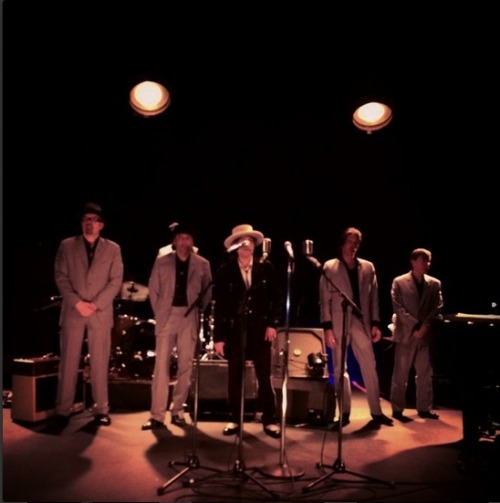
I’ve previously posted a bunch of clips from Bob Dylan’s Brisbane, Australia shows.
You can find them here and here and here.
These new clips just went online. There’s “Long and Wasted Years” from the Brisbane Convention and Exhibition Centre on August 25, 2014, and then a nearly 9 and one half minute “Ballad Of A Think Man” from Dylan’s club show at The Tivoli on August 27, 2014.
Enjoy.
Bob Dylan, “Long And Wasted Years,” the Brisbane Convention and Exhibition Centre, Brisbane, Australia, August 25, 2014:
Bob Dylan, “Ballad Of A Thin Man,” The Tivoli, Brisbane, Australia, August 27, 2014:
[I just published my rock ‘n’ roll novel, True Love Scars.” I’ve got a Goodreads. book giveaway going right now. Click here and enter.]
— A Days Of The Crazy-Wild blog post —
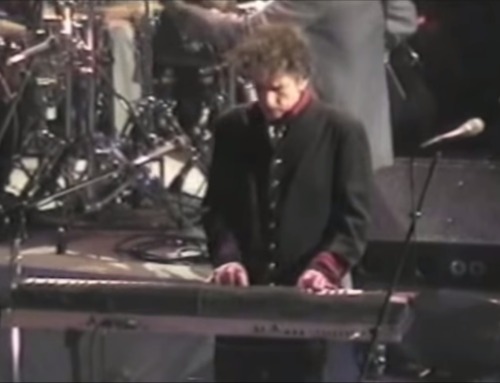
Bob Dylan is in quite good voice as he covers the George Harrison-written Beatles classic, “Something,” at Madison Square Garden on November 13, 2002.
[I just published my rock ‘n’ roll novel, True Love Scars.” I’ve got a Goodreads. book giveaway going right now. Click here and enter.]
— A Days Of The Crazy-Wild blog post —

Some fans videoed some of Radiohead frontman Thom Yorke’s recent DJ set out by the pool at the Roosevelt Hotel in Los Angeles.
Check it out.
Thanks Stereogum!
[I just published my rock ‘n’ roll novel, True Love Scars.” I’ve got a Goodreads. book giveaway going right now. Click here and enter.]
— A Days Of The Crazy-Wild blog post —
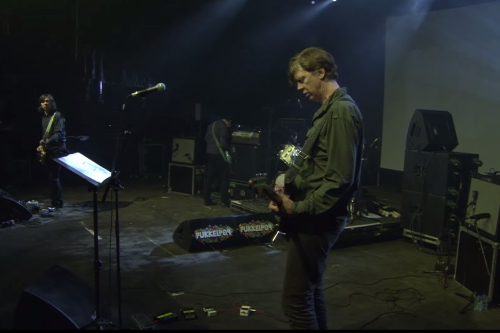
Thurston Moore and his new supergroup, which includes Sonic Youth’s Steve Shelly and My Bloody Valentine’s Debbie Googe, performed at Belgium’s Pukkelpop festival this past weekend.
Moore’s got a new album called The Best Day due October 21, 2014.
Here is Moore and his band performing a song off the new album, “Forevermore.”
Thirteen minutes worth!
Plus here’s an old Sonic Youth track, “Climbers & Creepers,” that you might not have heard. This was part of Peter Coffin’s”Music For Plants” series.
[I just published my rock ‘n’ roll novel, True Love Scars.” I’ve got a Goodreads. book giveaway going right now. Click here and enter.]
— A Days Of The Crazy-Wild blog post —

A year ago, on August 26 in Europe, and on August 27 in the U.S., a masterpiece comprised of recordings Bob Dylan made in 1969, 1970 and 1971 was released.
It was such a joy to hear the songs on Another Self Portrait, (1969-1971) – The Bootleg Series Vol. 10, which included an amazing version of the old folk song, “Pretty Saro,” wonderful demos of “I Went To See The Gypsy” and “When I Paint My Masterpiece,” and so many more.
While I always liked the original Self Portrait, Another Self Portrait is the better album. Of the songs that appeared on Self Portrait, for Another Self Portrait the Nashville overdubs were removed. Overall, what we get are much more intimate versions of those songs, plus many songs that Dylan chose not to release on Self Portrait. Plus a previously unreleased (officially, anyway) ‘Basement Tapes’ gem, “Minstrel Boy.”
But really, we don’t have to choose between those albums, as they both now exist.
I wrote a lengthy review of Another Self Portrait which you can read here.
For me, “Pretty Saro” remains the standout track because of both how Dylan’s voice sounds, and the way he sings the song.
“Pretty Saro”:
Below is a very cool 11 minute mini-documentary on the making of Another Self Portrait. If you haven’t yet seen it, now is the time.
Bob Dylan – Another Self Portrait Documentary Short from Columbia Records on Vimeo.
Here’s a Spotify sampling from Another Self Portrait:
Or listen to the entire deluxe version of the album including the Isle of Wight live tracks here.
And here’s the original Self Portrait:
[I just published my rock ‘n’ roll novel, True Love Scars.” I’ve got a Goodreads. book giveaway going right now. Click here and enter.]
— A Days Of The Crazy-Wild blog post —